Outland & Hans Ulrich Obrist
Hans Ulrich Obrist and Outland's team discuss the metaverse in a chapter from On NFTs, a survey edited by Robert Alice and published by Taschen
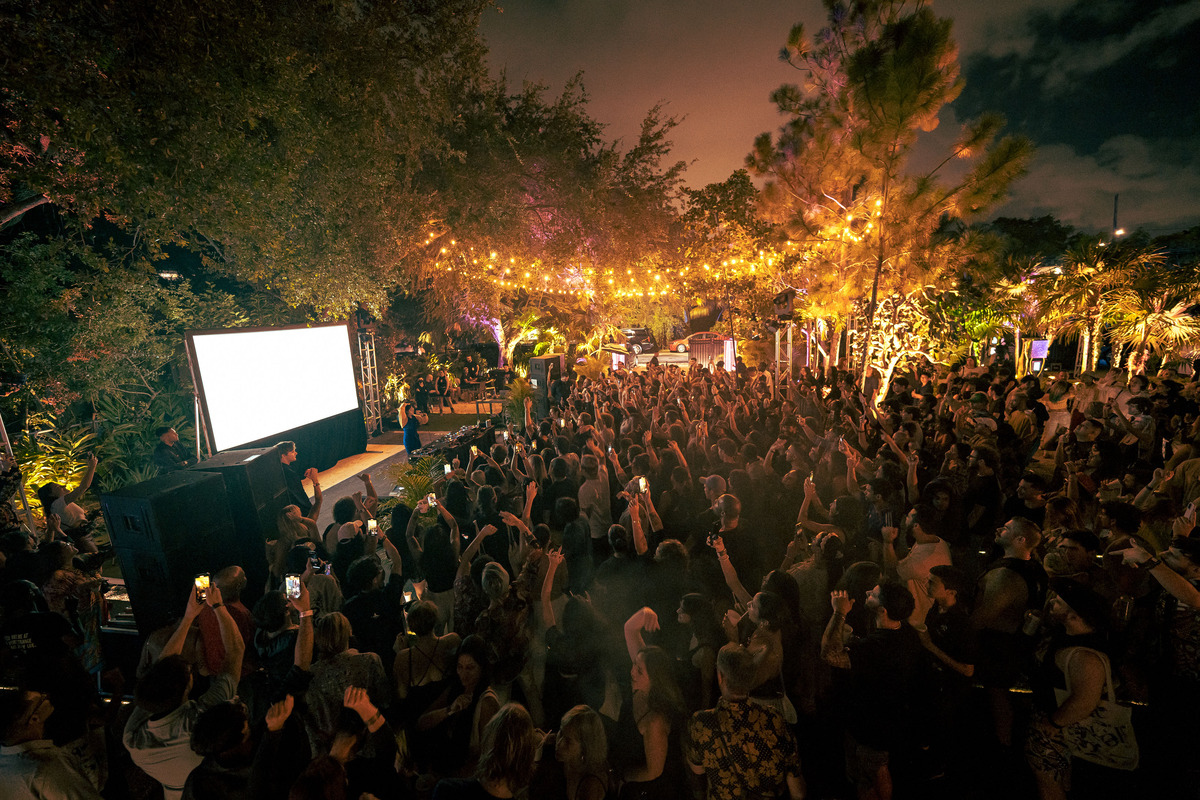
Friends with Benefits and Refraction DAO are two social organizations for people with shared interests in culture, the creative industries, and alternative models for distributing resources in those fields. Both are structured according to the web3 principles of decentralized autonomous organizations, or DAOs, which were originally conceived as automated corporations where governance is transparent and administered on the blockchain. But the use of technology for its own sake has never been the primary goal for either FWB or Refraction, and as they’ve grown both have experimented with ways to design decentralized communities informed by web3 tools but not determined by them. Refraction, which began as an online music festival, has expanded into a robust series of international events, and funds projects submitted and selected by its members through the Creative Grants program. FWB likewise propagates itself by hosting events, and in the last year has developed a framework called Event Keys that lets members take the initiative to organize gatherings in their own communities, funded by the FWB treasury. While both DAOs trade in web3 financial assets—the Refraction Pass NFT and the $FWB token grant access to the respective communities and their decision-making processes—the leadership committees are focused on the social and cultural benefits they can offer members. FWB’s mayor Alex Zhang and Refraction co-founder Greg Liburd met to discuss the principles of community design that have informed the growth and structure of their DAOs.
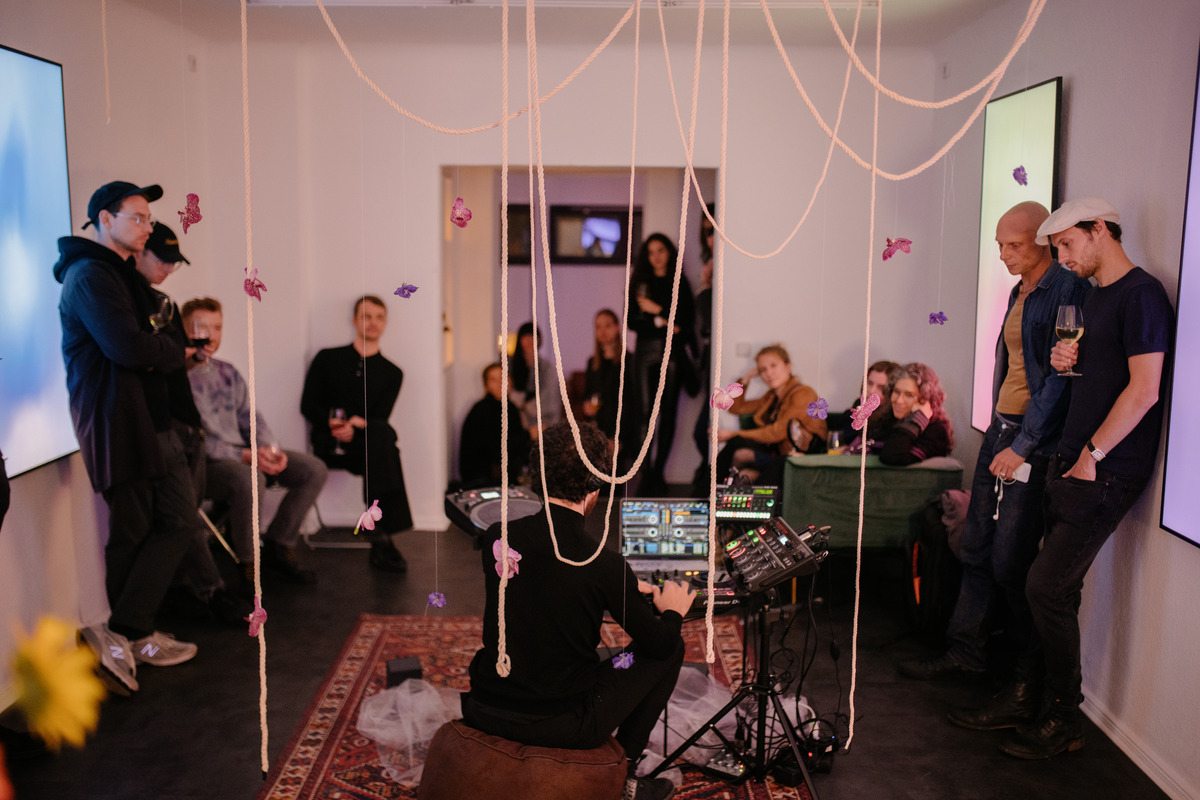
GREG LIBURD The framework of DAOs doesn’t need to be applied unilaterally. Often people view collective involvement as a matter of governance. That makes sense. But our collective involvement doesn’t necessarily rely on direct governance in all aspects of what we’re doing because we’re an arts and culture organization. It’s important to include folks in decisions that interest them. Creative grants are an example of something very tangible that we do that members want to participate in, whereas they’re usually not as interested in the operating budget—and that’s where the automated aspects of DAO governance come in. Those principles are of the highest importance to some DAOs, but we realize that they aren’t so integral to the reasons why people wanted to join Refraction.
ALEX ZHANG I’ve had a similar learning experience. In the early days of FWB, I was thinking about Christopher Alexander’s framework of community building as more like gardening than like architecture. The organizers set up the planters, and then the community can evolve organically into whatever it wants to be. That is incredibly important, especially in the early stages of community building, or with a geographically concentrated community. But lately I’ve seen a shift toward people saying, “Tell us what to do.” That’s counterintuitive to the initial philosophy I had. But over time I’ve learned that it’s important to create repeatable opportunities for people to get involved. They’re overwhelmed with everything happening in their lives. They want concrete actions they can take. Maybe this comes from a lack of pure blissful optimism in the space, or an issue with fractured attention. If you’re living in a commune in the middle of nowhere, you have nothing to do but figure out how to live together. But if you’re trying to create something in New York City, everyone has fifteen things to do in a day. They want to be part of something, but they need to be told how to get involved. It’s also just a matter of the maturity of our space. When you and I were starting our respective projects two and a half years ago, it was a totally different landscape.
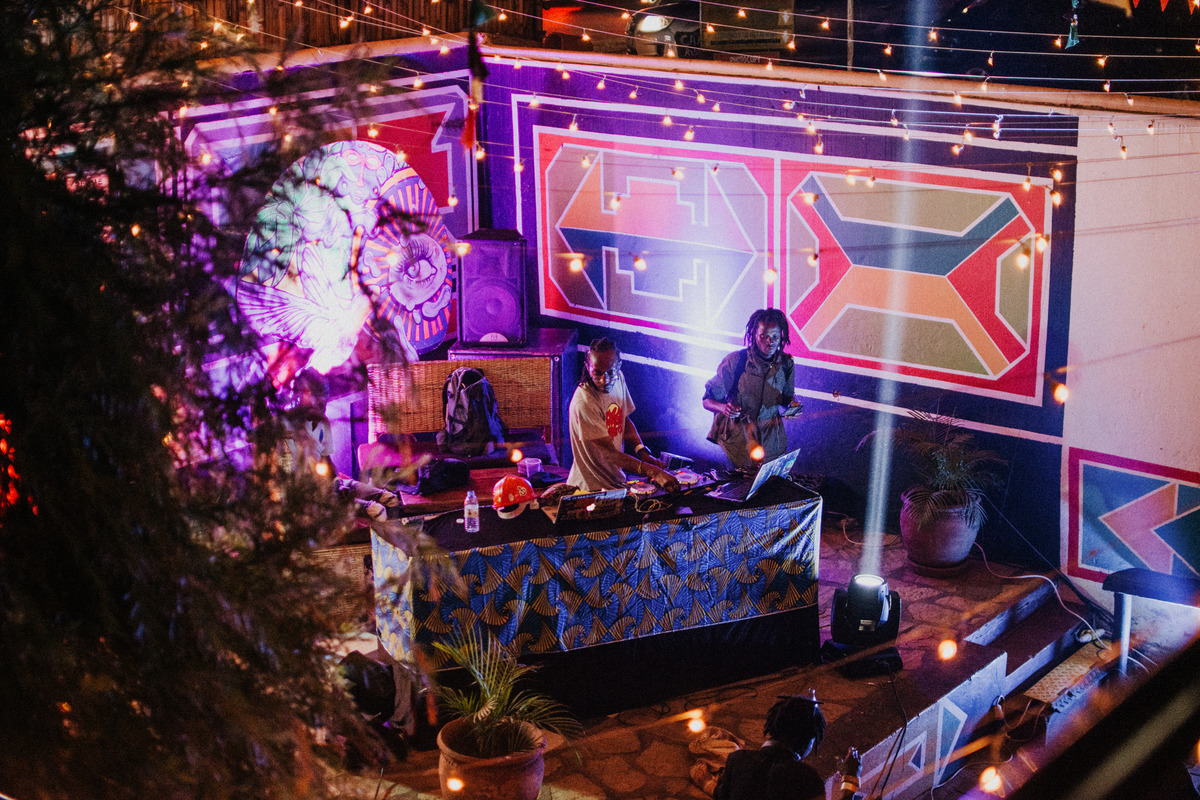
LIBURD At one moment DAOs were the darling, then everyone moved on and started talking about AI. Those broader factors can influence business realities. So community design has to be closely aligned with your organization’s functional model. It’s important to look at how entities like mutual aid organizations have persisted over time. Creative grants are one of the biggest—if not the biggest—value adds for our community, because it means we’re going beyond merely saying we want artists to be involved in events we’re doing. People come to the DAO, put a proposal out, the community votes on it—and then we’re suddenly building an art center in Medellin, having a festival in North Africa, or doing work toward regenerative forestry through NFTs. Realistically, we have events and find sponsors and do other Web 2.0 activities that bring in value and money. And we have to be cognizant of having community design that works within those parameters so that we can get money to people to be able to realize their creative vision to make the world a better place.
ZHANG We’re both part of cultural organizations, and I’ve always found that in contexts like ours the financial motivations aren’t core incentive drivers. Token drops work in a defi landscape, where you’re staking to receive tokens to pump and dump. In incentive design, the economic baselines should be there—in our case it’s the token, for you it’s the NFT—but the core of our work is building stronger incentive frameworks on top of them, usually around values that are specific to the organization. In FWB, status comesfromgoing to events and making contributions related to arts, culture, and entertainment. Every community has heroes that people look up to. In FWB the heroes are artists, graphic designers, musicians, DJs, and technologists. The way to drive incentive is to make sure people’s contributions are recognized, and create more reasons for those folks to stay connected.
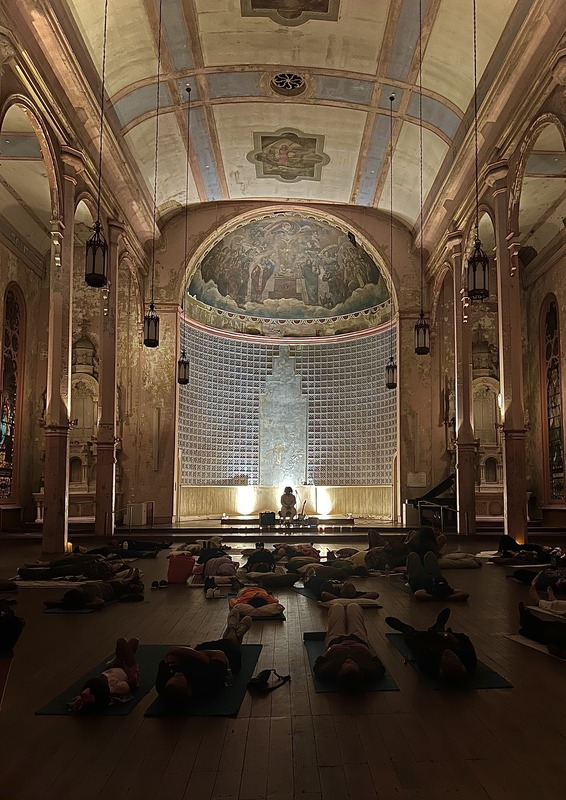
LIBURD The alignment of incentives matters. If you’re in defi, incentives tend to be grounded in economics. Our principles are oriented toward this idea of collective ownership. Maybe down the line liquidity will have some importance because of that. We try to go out of our way to reward people beyond the core contributors and community members. If we do an event and folks are working security or the bar, we want to be able to give them tokens and share the pie. If you’re entertaining or performing at one of our events, you’re going to get tokens in addition to payment at a market rate. But we’re also about arts and culture, so for the most part our audience isn’t deep into web3. Tokens don’t matter to them as much. When someone puts a creative grant to good use, or performs at an awesome event, they’re getting the value of the community. So we don’t need to go too far with web3 evangelism. There’s an overhead to that kind of education. FWB does a great job with onboarding, with teaching new members about those dynamics, but it’s a big lift. We may not put as much effort toward getting our community up to speed on incentive structures and liquidity pools until we’re further along, when those aspects of our model are going to have more direct impact on members.
ZHANG Trustless protocols ensure further trust on the social level. At least with our community, a lot of it runs entirely on trust between dynamics of contributors and community members. The novelty here is not that everything is automated. The novelty is that everything is transparent and on-chain, which creates a set of checks and balances. As the technology evolves, payments will become significantly more automated and trustless. Everything will become a lot more legible and interoperable and viewable. But trust is key to the maintenance of communities, especially in the crypto ecosystem, where there are huge breaches of trust on a consumer level, like with FTX and Terra Luna.
LIBURD FWB is a fantastic example of an organization where a member can lift up the hood and see the inner workings. That goes a long way in terms of building trust in the community. At Refraction we have a lot of trust in our curation, which started as one of the more centralized parts of our operation. Artists joined because they respected the other creatives we were working with and the art that we helped produce. If people are coming to our events, they’re real heads. They know we’re not fishing for whoever is going to get the biggest audience or create the most hype. It’s a curated experience. We’re trying to counter the Live Nations of the world, who are making business decisions based on drawing in as many people as possible, to the point where even the artists aren’t happy with how the tickets are managed.
We’re making an alternative, establishing respect through curation. At the same time, we’re trying to make a decentralized curatorial framework viable so we can take that trust and distribute it across other nodes. If you get a creative grant, we believe you’ll use it for what you said you would. The community is going to trust you after having voted for your proposal. Within that system, there’s a lot of room to innovate and look for emergence. People do things differently in other regions of the world; they’re responding to diverse audiences and working in other mediums. That requires wider approaches to curation, and we know we can’t do that in a centralized way. We’re trying to create a trust model for curation that will allow us to become even more distributed and tackle a spectrum of problems and make the ecosystem more interesting through the art and events we support.
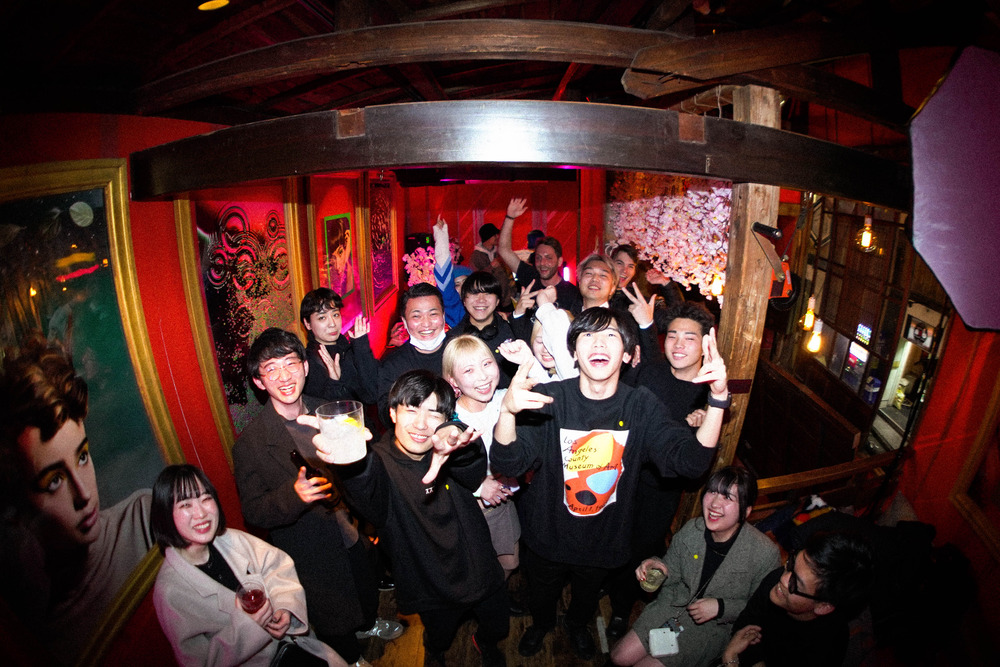
ZHANG At FWB, the DAO organizes some keynote experiences throughout the year. Our annual FWB Fest gathers about a thousand people on the campus of Idyllwild Arts Academy outside of Los Angeles. We also have major events coinciding with Art Basel Miami Beach and NFT.NYC. A recent initiative we took on was Event Keys, which essentially decentralizes our events program into the hands of our community. We created a combination of ticketing and RSVP software that allows our members to create FWB events, as well as a framework for how to organize an FWB-aligned event. We let people know what we’ve seen work well over the years. So every month we have twenty to thirty events organized by community members all over the world, and they earn tokens for hosting and organizing. The idea can be something small, like a coffee shop meet-up or a gallery tour. We’re launching a campaign in the coming months where members can get funds to host an event in their home, and everyone brings food potlatch-style. The idea is to allow for more bottom-up creation of IRL events. Given my background in membership spaces, it’s always been a dream to think about less top-down organizing and more bottom-up planning. Early press about FWB called us “decentralized Soho house.” Why take out a ten-year lease on some crazy building and overcharge on food to create a super-luxe experience, when at the end of the day all everyone wants to do is connect with other like-minded people?
That fits with my understanding of FWB as a city. Many software designers have been studying urban planning: Christopher Alexander’s A Pattern Language (1977) is about how cities that are built top-down yield different outcomes than ones that grow bottom-up. Le Corbusier built cities according to a master plan, and the results are sometimes unlivable, or just not designed with that human element. More contemporary urban theorists like Alexander or Jane Jacobs study the organic development of how people exist in spaces as they are, so that planners can build for them, or with them, or around them. That’s a philosophical framework that I’ve always used in in community building. Thinking of a community as a city can also lead you to some productive metaphors. What is FWB’s trade policy? What’s our import/export model? Currently our main source of revenue is the import of partnerships into FWB, where brands sponsor events. We’re also exporting cultural goods, like NFTs and other art projects. This is a helpful way to think about digital town-building, rather than seeing the organization as a corporation that exists for the maximization of profit.
Some organizations are actually building new cities, like Praxis, which is obviously an incredibly ambitious task. I’m more interested in the temporary autonomous zones created through events. I’ve been to Burning Man, and I found it to be the greatest experiment in modern history—a pop-up city of 80,000 people coming together aligned under a certain set of values and norms. Whether it’s your vibe or your aesthetic doesn’t matter. You have 80,000 people who can recite a collective set of values, like radical transparency, that have been prescribed by the organization. There are ritual practices: the decentralized construction of the temple, the burning of the temple, the burning of the man. All Burning Man does is run the organizing infrastructure to manage the Port-a-Potties, the grid system of the camp, the wayfinding, the funding for the art program. Then the camps—which I think of as sub-DAOs—come and populate the structure and create the experience itself. Burning Man brings in about 45 million USD in revenue a year and their overhead is 44 million. It’s a non-profit, a 501c3, and all the money it makes goes toward sustaining itself. It’s a very interesting case study for cultural DAOs that are thinking about how to decentralize a community over time. Burning Man has done a fantastic job of that.
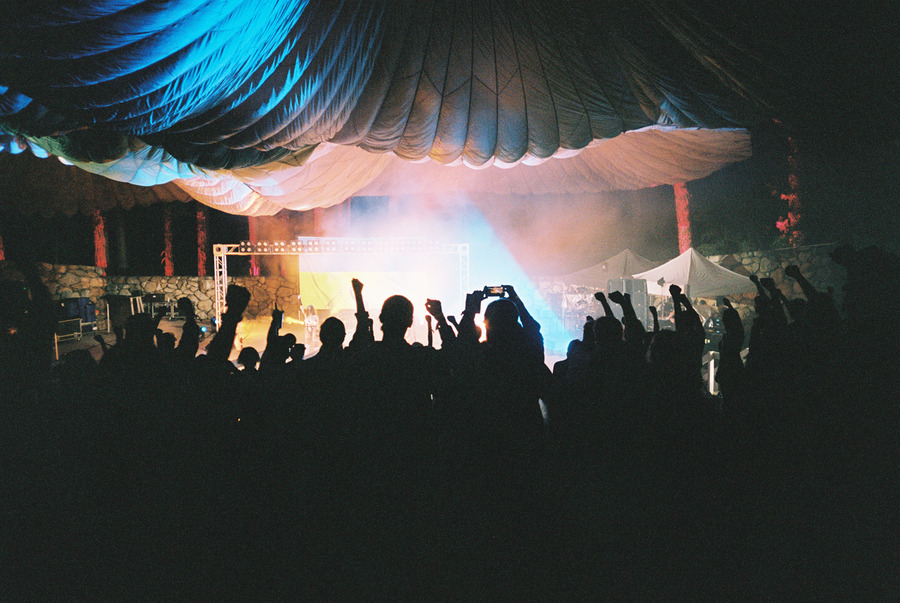
LIBURD I read an article called “Status as a Service,” about how social networks start off having to do the equivalent of proof of work. Everyone has put in some legwork. That’s the case at Burning Man. Hierarchies are flattened because you have to take a car out there and build your own camp. You’re responsible for everything you bring in. You have to leave no trace. And when a dust storm hits, it clobbers everyone. The plug-and-play camps, where billionaires come in for a turnkey experience, didn’t sit well with people, because all of a sudden there was a hierarchy. Some people just flew in and got picked up and their costumes were made for them. When you’re doing community design, it’s important to have some required effort, because it places people on a level playing field. That’s true for the great cities of the world, too. Being in New York isn’t particularly easy. You have to set up your home here. You have to put up with the same problems that others do. That creates a sense of camaraderie. You can put up a little bit of friction by telling people what they have to do to participate in your community. That’s one of the things I learned from Burning Man.
The way Burning Man operates as an arts and culture organization is an influence, too. It curates major grants for the big art pieces. You might be able to weigh in, but it’s Burning Man that comes up with a theme and you don’t vote on it. Still, you don’t have to abide by the them. You can do your thing. That parallels how a lot of successful community-driven organizations create a structure for people to be able to build without being extremely prescriptive. You don’t know what someone’s going to do with that FWB Event Key. You don’t know what someone’s going to put on the table for a Refraction creative grant. When I look at the 25 projects that got community approval out of the 150 that were submitted—which is a very high percentage, by the way—they’re fantastic and interesting and unpredictable and inspiring. I wouldn’t have been able to come up with half of those ideas myself.
ZHANG Virgin Group is another pre-web3 entity that offers a different model for thinking about organization. A parent-level company houses the brand and proliferates various different activities. There are airlines, records, cruise ships, hotels, and more that all share the Virgin branding: red, fun, sexy, doesn’t take itself too seriously. Richard Branson is constantly doing ventures and something like 70 percent of them are loss leaders, while the others generate a lion’s share of the revenue that flows back into the main entity that funds the rest of them. We’ve been thinking about that at FWB. Does it make sense for everything that FWB does to live under one entity, or does it make sense to structure some of the offshoots as their own companies, where the DAO owns a majority percentage but gives incentives and funding to the operating teams to grow those projects over time? Another parallel would be LVMH—a holding group of luxury brands. What does it look like if the parent group is community-owned and transparent?
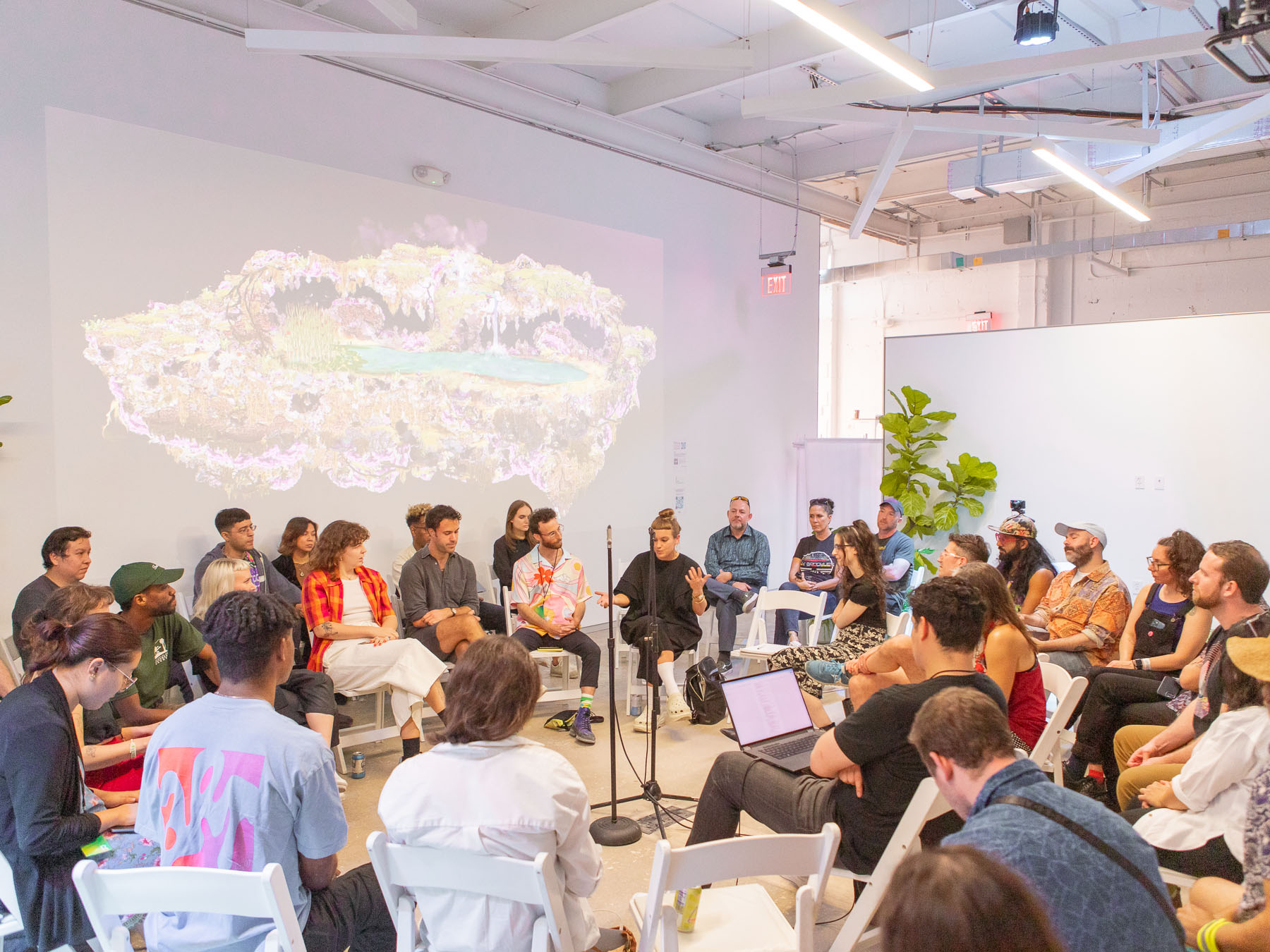
LIBURD I’m part of Afropolitan, a group that is trying to build a network state for the African diaspora, after Balaji Srinivasan’s model. Afropolitan is a DAO, and it’s curious how quickly they have been able to make temporary cities, even as small gatherings of people. What’s really intriguing to me is the idea to make Afrotowns analogous to Chinatowns. If you look at what people say when they talk about designing these enclaves, you’ll see they don’t want them to be impenetrable, because then you don’t foster cultural or economic exchange. At the same time, they shouldn’t be so diluted that you lose the cultural value of rituals and special occasions. In the average Chinatown, a dollar gets passed around fifteen times. It really travels within that economy. That’s like what we want to do when thinking about the nodes that propagate from Refraction. So the model of the enclave is really interesting. It’s literal worldbuilding. There’s a narrative framework. You have an idea of what it’s like to go to a Chinatown in any city. It becomes a destination. When you’re building a community, how do you come up with enough narrative and enough structure that people can go out and build a version of what they’re trying to do in the name of arts and culture and bring enough of their own flavor, their own history, their own expression? One of the reasons I joined Afropolitan was to be part of a practical, real-world experiment that involves putting up actual storefronts to seed these things and see if they work.
ZHANG This has been a fun conversation. I love seeing the way you approach this. There aren’t too many folks like us bringing this context to the space.
LIBURD Likewise. I can’t say enough about the openness of FWB’s approach. There are a lot of people who are looking at models of community design and thinking in theoretical terms about what can be done. It’s harder to actually do it—especially when there are pressures to get good press and attract stakeholders. It’s not just about having a great idea for a community that you’re going to stick with. The more dialogue there is around these ideas, the better. People need to put real events and real projects together, because as we know, most of the time in the startup world that doesn’t end up happening. It’s important to have people who are willing to get things done, but also be creative and inventive about how they get them done.
—Moderated by Brian Droitcour
